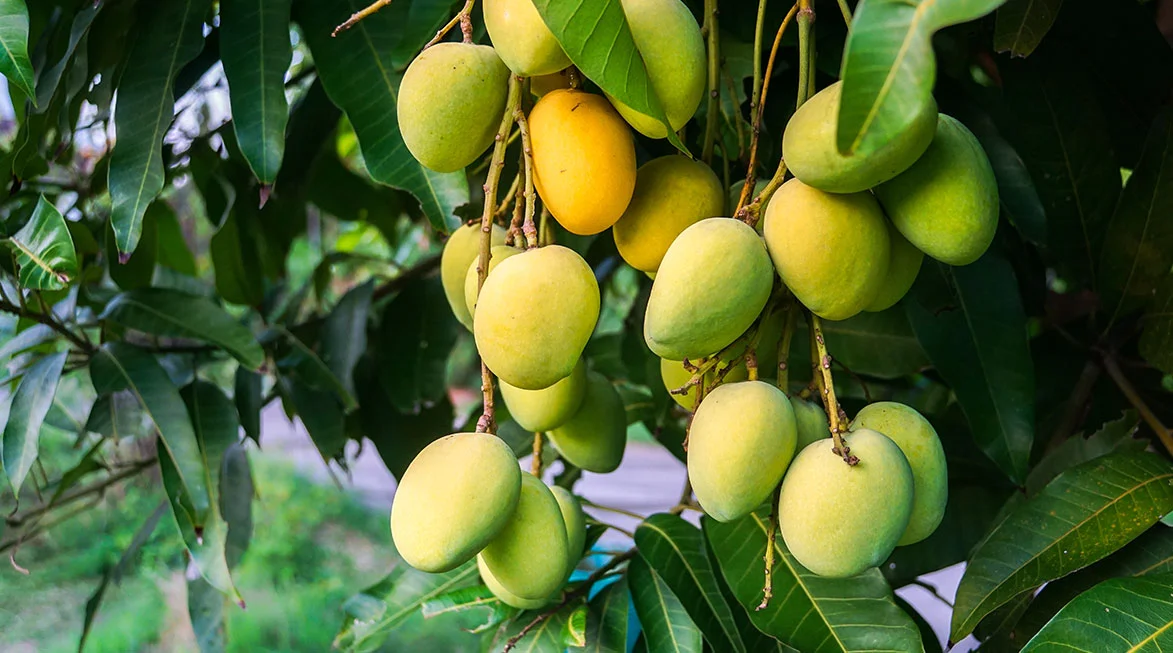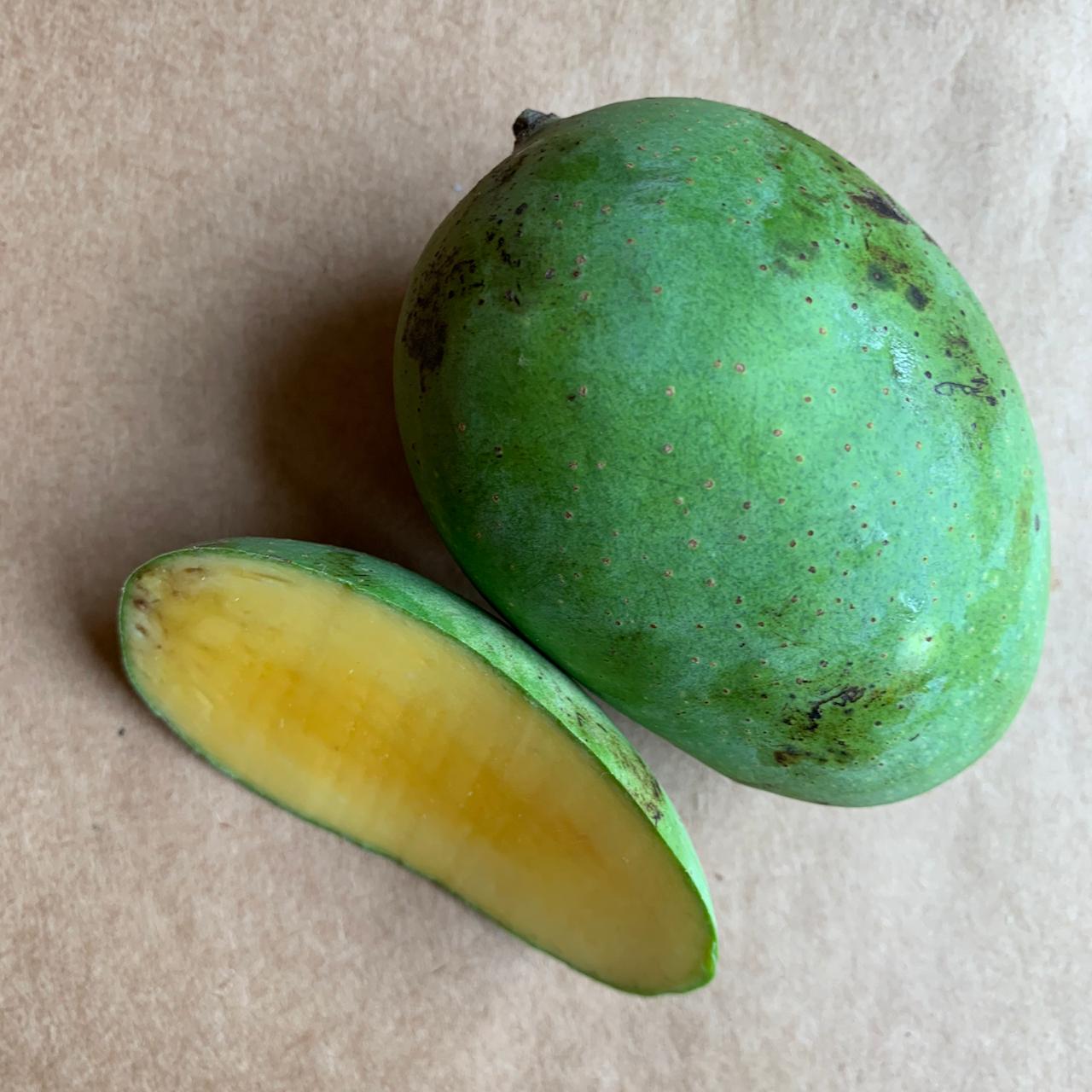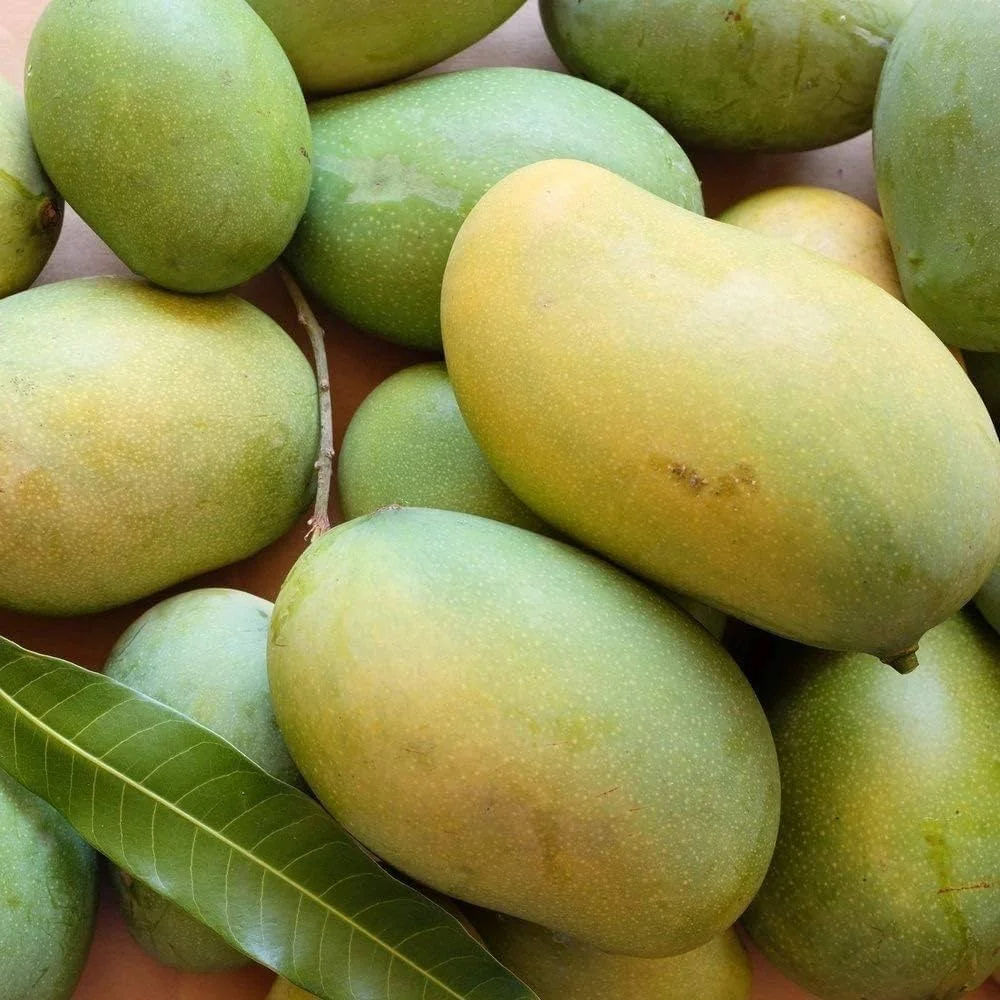India marks National Mango Day on July 22 each year to pay tribute to the mango, often referred to as the King of Fruits.
This day was chosen since it coincides with the height of mango season, when shops are filled with juicy varieties and mango lovers delight in the fruit in every form. For over four thousand years, mangoes have been deeply ingrained in India's folklore, cuisine, and customs.
Grown all over the world are over 1,000 to 1,500 kinds of mangoes. With well-known varieties such as Alphonso, Kesar, Dasheri, and Langra, India boasts over 250 types.
With more than 40% of the world's mangoes, India is also the biggest producer worldwide. This essay will cover eleven fascinating facts, along with well-known mango varieties and their availability throughout India.
What Is National Mango Day 2025, And How Is It Celebrated?

This day is set aside to celebrate the "King of Fruits," honouring its rich flavour, nutritional value, and cultural importance.
India gave rise to the day, where mangoes have been grown for more than 4,000 years and hold a particular significance in mythology and customs. Accounting for almost half of the global output, India is also the world's top mango producer.
Here's how National Mango Day is typically celebrated:
- Mango Tasting Parties: Many people gather to sample various mango varieties like Alphonso, Kesar, Dasheri, Ataulfo, Haden, Tommy Atkins, and more. This allows for comparing their unique sweetness, texture, and colours.
- Whipping Up Mango Recipes: Mangoes are versatile and used in both sweet and savoury dishes. Celebrations often involve preparing and enjoying a wide range of mango-based treats, such as:
- Mango Lassi (a popular yoghurt drink)
- Mango Salsa
- Mango Kulfi (Indian ice cream)
- Mango Cheesecake
- Mango Smoothies
- Mango Chutney
- Mango Tarts and Pies
- Mango with yoghurt or cereal
- Visiting Mango Orchards: In mango-growing regions, people might visit local farms or orchards to experience mango picking and learn about the cultivation process.
- Supporting Local Farmers: Buying mangoes from local markets or attending mango festivals and exhibitions helps support small-scale farmers and promote indigenous varieties.
- Sharing on Social Media: Many participants share their mango delights, recipes, and celebrations online using hashtags like #NationalMangoDay.
- Educational Activities: Some celebrations include learning about the history of mangoes, their health benefits, and different varieties through quizzes, demonstrations, and informational sessions.
- Cultural Significance: In certain cultures, particularly in South Asia, presenting a basket of mangoes is a symbolic gesture of friendship and goodwill, adding a traditional element to the celebration.
Which Are The Most Popular Mango Varieties Available in India?
Mangoes are a beloved fruit worldwide, and their availability varies significantly depending on the variety and region. Here's a look at some of the most popular mango varieties and their general availability:
Popular Indian Mango Varieties and Availability
The primary mango season in India typically runs from March to August, with different varieties reaching peak maturity at various times.
1) Alphonso (Hapus):
- Flavour/Texture: Often called the "King of Mangoes", it is known for its rich, creamy, non-fibrous pulp and intense sweetness.
- Availability: Late March through June, with peak season generally from April to June. Primarily from Maharashtra (Ratnagiri, Devgad).
2) Kesar:

- Flavour/Texture: Characterised by its saffron-orange colour, sweet aromatic taste, and fibreless flesh.
- Availability: April to June, with peak season typically from April to May. Primarily from Gujarat (Gir region).
3) Dasheri:

- Flavour/Texture: Elongated, yellowish-green when ripe, with juicy, sweet flesh and a pleasant aroma.
- Availability: June to August, with peak season from June to July. Popular in North India, especially Uttar Pradesh.
4) Langra:

- Flavour/Texture: Distinctive green skin, even when ripe, with a sweet and tangy taste and a fibreless texture.
- Availability: June to August, with peak season generally from July to August. Popular in North India (Uttar Pradesh, Bihar) and Bangladesh.
5) Chaunsa:

- Flavour/Texture: Pale yellow-green when near ripe, becoming soft and wrinkly. Known for its extremely juicy, sweet flesh and rich aroma.
- Availability: Late season, typically June to September. Popular in India and Pakistan.
6) Badami:

- Flavour/Texture: Also known as the "Alphonso of Karnataka", it shares similar creamy and sweet characteristics.
- Availability: Typically available in May and June.
7) Amrapali:

- Flavour/Texture: A hybrid of Dasheri and Neelum, small to medium-sized with vibrant yellow and a delightful taste, fibreless.
- Availability: May to July.
8) Bombay Green (Saroli):
- Region: Northern India (Uttar Pradesh, Haryana, Punjab), West Bengal, Bihar.
- Characteristics: Medium-sized, retains a green skin even when ripe, with a sweet and sour taste and an intense aroma—an early-season variety.
- Availability: May to July.
9) Himsagar:
- Region: West Bengal and Bihar.
- Characteristics: Medium-sized, with a sweet aroma, creamy texture, and fibreless, yellowish pulp. Highly regarded as a dessert mango.
- Availability: May to early June.
10) Banganapalli (Safeda / Benishan):
- Region: Andhra Pradesh (Banganapalle town), also popular in Tamil Nadu and Karnataka.
- Characteristics: Large, obliquely oval fruit with thin, smooth, golden-yellow skin. It has a firm, meaty, and fibreless flesh with a mild sweetness—one of the earliest varieties to hit the market.
- Availability: April to June.
11) Totapuri:
- Region: Southern India (Karnataka, Andhra Pradesh, Tamil Nadu), also in Gujarat.
- Characteristics: Easily identifiable by its distinctive beak-like shape (resembling a parrot's beak – "Tota"). It has a tangy flavour with less sweetness and firm flesh, making it ideal for salads, pickles, and processing.
- Availability: April to July.
12) Neelam:
- Region: Widely grown across South India (Andhra Pradesh, Tamil Nadu, Karnataka).
- Characteristics: Small to medium-sized, oblong-shaped, with a smooth, golden-yellow colour and a balanced sweet-tangy flavour. Known for its extended shelf life, it is often available later in the season.
- Availability: May to July, with good availability even in June.
11 Fascinating Facts About The King Of Fruits

Here are 11 fascinating facts about the King of Fruits, the magnificent mango:
- Originating in India more than 5,000 years ago, mangoes have evolved over such a long period that their past is closely tied to ancient Indian customs and way of life.
- Mangoes are revered as symbols of love, friendship, wealth, and fertility in many societies, particularly in India. Giving mangoes is a common act of kindness.
- Mangoes are members of the same Anacardiaceae plant family as cashews and pistachios, surprisingly. Some of their usual chemical compounds are created via this shared ancestry.
- Fourth- to fifth-century BC Buddhist monks carried mango seeds to Southeast Asia, and later, Portuguese explorers introduced them to Africa and Brazil in the sixteenth century, thereby helping to spread their cultivation today.
- Mangoes are high in folate as well as vitamins A (good for eyesight) and C (immune booster). They also offer a spectrum of minerals, antioxidants, and dietary fibre.
- There are over 500–1000 known types of mangoes throughout the globe, each with a distinct flavour, perfume, form, size, and colour. Just a small percentage of these are grown for market.
- From the time a mango bloom opens until the fruit is ready for harvest, it takes approximately 100 to 150 days, depending on the variety and weather conditions.
- Accounting for more than 40% of the world's production, India is by far the largest producer of mangoes in the world. With its creamy texture and deep flavour, the Indian Alphonso mango is sometimes considered to be among the best kinds.
- Exceptional length characterises mango trees. Some mango trees have grown for more than 300 years and are still bearing fruit, therefore leaving a lasting legacy.
- Although delectable on its own, mango is very adaptable. It finds application in a great range of culinary creations, including chutneys, pickles, salsas, drinks, smoothies, sweets, and even savoury meals.
- Many times used in religious rites, celebrations, and weddings, mango leaves are regarded as sacred in Hinduism. They are thought to avert evil and usher in good fortune.

Comments
All Comments (0)
Join the conversation